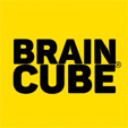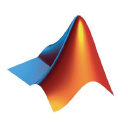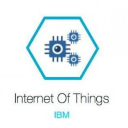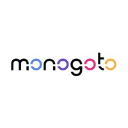IoT Management software: purchase guide
IoT Management Software in 2025: Powering Smarter, Connected Operations
What Is IoT Management Software, Really?
IoT management software is the operational nerve center of connected infrastructure. As the Internet of Things (IoT) ecosystem continues to grow in scale and complexity, this type of software has become essential for overseeing everything from basic sensor networks to complex, cross-border IoT deployments. At its core, IoT management software enables businesses to register, configure, monitor, control, and update connected devices from a single interface. But its real strength lies in how it streamlines device lifecycles, automates repetitive tasks, and helps companies make real-time decisions based on incoming data. These tools are built to handle heterogeneous environments, where devices from multiple vendors using different protocols must coexist and communicate. Whether you’re managing smart meters in an energy grid or asset trackers in global logistics, IoT management software ensures continuity, visibility, and operational agility. It bridges physical and digital operations, offering a foundation for digital transformation initiatives across sectors.
Why IoT Management Software Matters in 2025
The role of IoT in business operations is more critical than ever, with billions of connected devices generating petabytes of data every day. In 2025, the ability to harness this data for strategic advantage depends entirely on how well an organization can manage its IoT infrastructure. Manual oversight of thousands of devices simply isn’t feasible, and the risks of inaction are significant — from data breaches due to insecure endpoints to costly downtime caused by unmonitored failures. IoT management software addresses these pain points by centralizing control, enabling proactive maintenance, and automating compliance enforcement. It helps businesses keep pace with evolving industry regulations, monitor energy usage, reduce operational overhead, and ensure that data collected from the field is trustworthy and actionable. As companies increasingly rely on IoT for mission-critical operations — in healthcare, manufacturing, agriculture, and beyond — the case for reliable, scalable management platforms becomes not just compelling, but non-negotiable.
How IoT Management Software Works Behind the Scenes
Under the hood, IoT management platforms combine network services, data management, security layers, and automation engines to deliver a seamless experience. Device onboarding begins with authentication and provisioning, ensuring each new node is registered with secure credentials and assigned to the correct organizational context. Communication is typically managed using lightweight protocols like MQTT, CoAP, or RESTful APIs that support low-bandwidth, high-frequency data exchanges. Once devices are connected, the platform continuously collects telemetry data — temperature, location, battery levels, performance metrics — which can then be visualized on customizable dashboards. Rules engines allow administrators to define automated workflows: for instance, if a machine overheats, a ticket is created and a maintenance team is dispatched. Many platforms also include firmware-over-the-air (FOTA) capabilities, enabling remote updates without service disruption. As threat landscapes evolve, built-in security tools like encryption, access control, anomaly detection, and patch management keep networks resilient. Advanced platforms further integrate with data lakes, machine learning pipelines, and enterprise systems, acting as a real-time conduit between physical assets and digital insights.
The Top IoT Management Software for 2025: Deep Dive Comparison
| Software |
Key Features |
Pricing |
Reviews |
Free Trial / Demo |
| Le M2MManager |
Advanced IoT device monitoring, reporting, and automation for efficient fleet-wide control. |
On request |
No user reviews |
Free version, trial, and demo available |
| Software AG |
Centralized management hub with real-time insights, predictive analytics, and integration with industrial systems. |
On request |
4.9/5 (7 reviews) |
Free version, trial, and demo available |
| Braincube |
IoT + CMMS functionalities for manufacturing: optimize uptime, monitor assets, and schedule maintenance. |
On request |
2.8/5 (8 reviews) |
Free version, trial, and demo available |
| MathWorks MATLAB |
Device health monitoring, real-time data visualization, automation scripting, and advanced simulation tools. |
On request |
No user reviews |
Free version, trial, and demo available |
| IBM Internet of Things |
End-to-end device lifecycle management with AI-driven insights, automation, and secure data orchestration. |
On request |
No user reviews |
Free version, trial, and demo available |
| Kalima Blockchain |
Decentralized IoT network with blockchain-secured communication and real-time monitoring for critical use cases. |
On request |
No user reviews |
Free version, trial, and demo available |
Best Practices for a Successful IoT Software Implementation
Successful IoT software implementation begins long before the first device is activated. Organizations should start by mapping out their device landscape — identifying what’s already deployed, what’s coming online, and how each asset contributes to broader business goals. Establish clear ownership and responsibility across teams: IT may oversee security, while operations own performance metrics. Choose platforms that are protocol-agnostic and offer strong APIs for integration with your ERP, CRM, or cloud infrastructure. During rollout, ensure all devices are securely provisioned with unique identifiers and that traffic is encrypted end-to-end. Prioritize platforms with strong alerting capabilities and customizable dashboards that reflect the KPIs that matter most. Don't overlook the importance of training: users at every level — from field technicians to data analysts — need to understand how to interact with the system. Regular audits, patch schedules, and redundancy planning are key for long-term reliability. Consider setting up a digital twin environment for testing updates or new device deployments before they go live.
Where IoT Management Software Is Headed in 2025: Key Trends
Looking forward, IoT management software is becoming more intelligent, decentralized, and autonomous. The rise of edge computing means more analytics will happen locally — reducing latency and bandwidth usage while increasing responsiveness. AI and machine learning models are being integrated directly into management layers to allow for predictive diagnostics, autonomous remediation, and dynamic resource allocation. Blockchain is gaining traction for secure, verifiable transaction logging between devices, especially in critical infrastructure. Open-source frameworks and standards are also maturing, making interoperability across vendors more feasible and reducing vendor lock-in. Environmental sustainability is another rising concern: platforms are now being evaluated not only on technical capabilities but also on energy efficiency and carbon impact. As digital twin technology matures, expect to see full virtual replicas of physical systems used for planning, simulation, and predictive maintenance. The result is a shift from reactive device control to proactive, data-driven operational orchestration.
Making the Most of a Connected World
The promise of IoT isn’t just about sensors and connectivity — it’s about turning data into decisions and operations into insights. In a world increasingly driven by automation, responsiveness, and remote management, IoT management software plays a foundational role. It empowers businesses to take control of sprawling device ecosystems, enabling them to scale, secure, and optimize their connected infrastructure. Solutions like Le M2MManager, Software AG, Braincube, MathWorks MATLAB, IBM Internet of Things, and Kalima Blockchain provide a diverse range of capabilities for industries ready to embrace the future. As IoT continues to evolve, those who invest in flexible, secure, and intelligent management platforms today will be the ones leading tomorrow’s connected economy.







